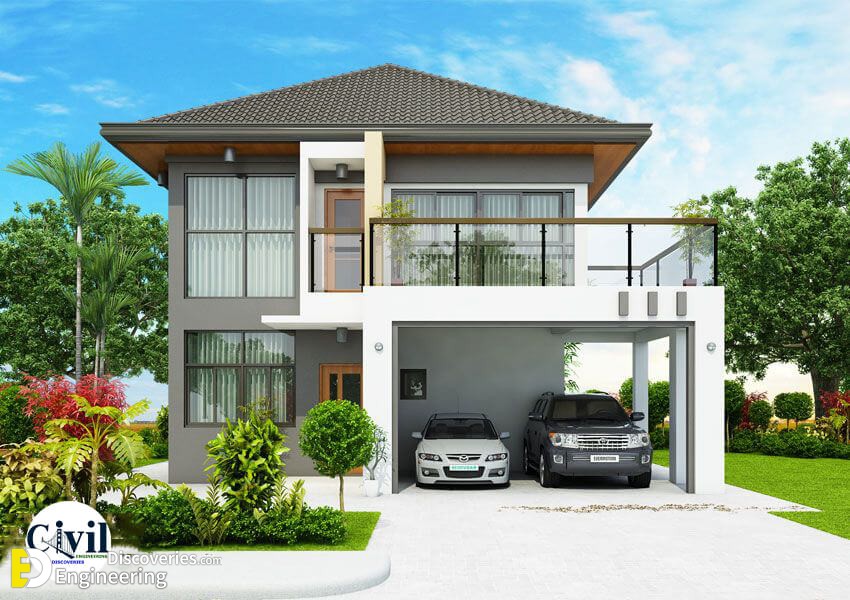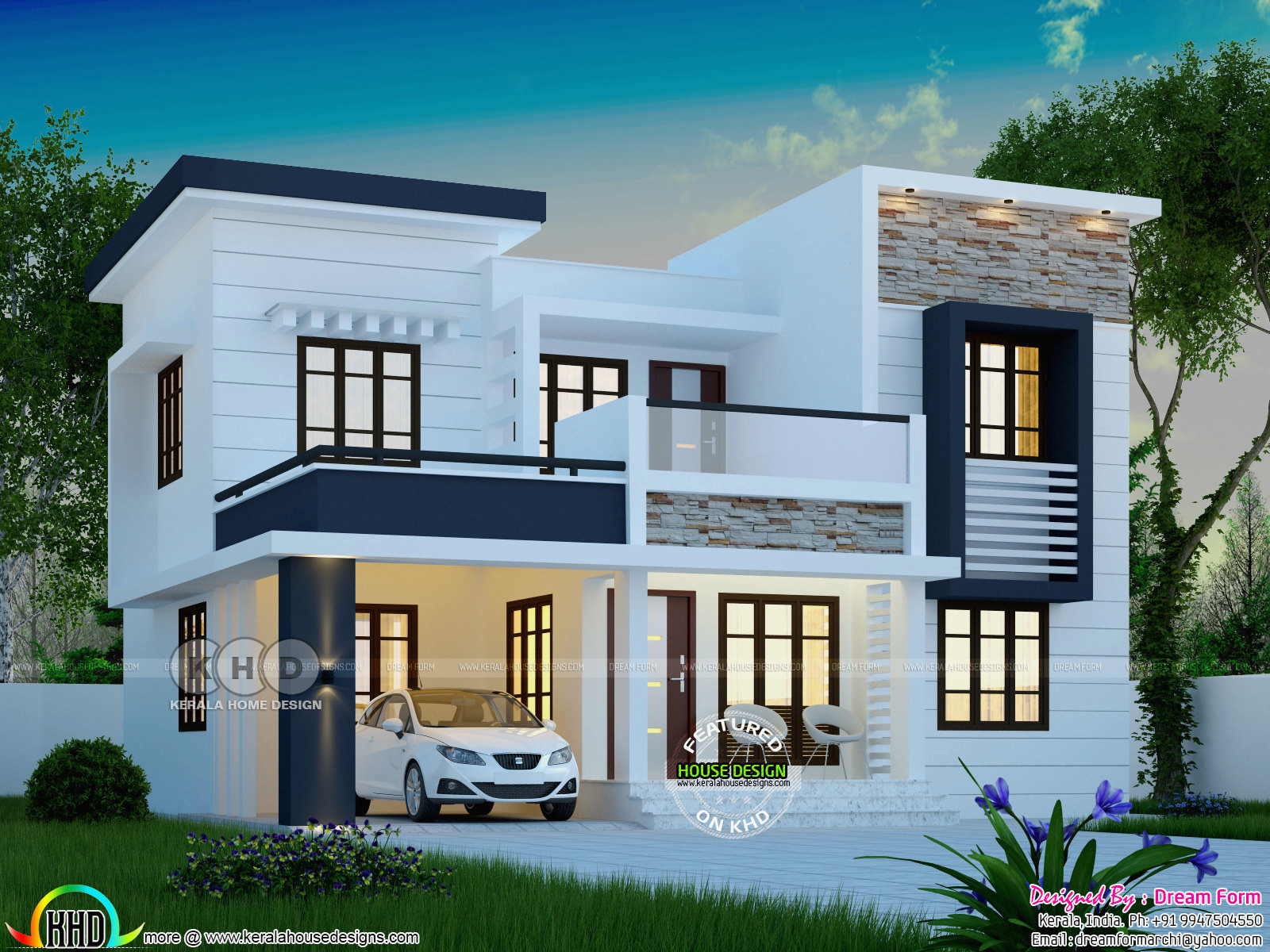The Allure of Contemporary Design

Contemporary architecture, a style that emerged in the mid-20th century, has captivated homeowners with its clean lines, open spaces, and emphasis on natural light. This design aesthetic, often characterized by its minimalist approach and focus on functionality, offers a refreshing alternative to traditional styles.
Advantages of Contemporary Design for a 4-Bedroom House
Contemporary design offers numerous advantages for a 4-bedroom house, particularly for families seeking a modern and functional living space. Its open floor plans, characterized by the absence of walls and the creation of large, interconnected spaces, promote a sense of openness and flow. This design principle fosters a sense of community within the home, allowing family members to interact freely while maintaining individual spaces.
Iconic Contemporary Homes
Contemporary homes often showcase the use of natural materials like wood, concrete, and glass, which contribute to the overall aesthetic appeal and sustainability of the design. These materials not only enhance the visual impact of the home but also create a sense of warmth and connection to the surrounding environment.
- The Farnsworth House by Mies van der Rohe: This iconic home, built in 1951, is a testament to the minimalist principles of contemporary architecture. The house, situated on a wooded site in Plano, Illinois, features a steel frame, glass walls, and a flat roof, allowing for seamless integration with the surrounding landscape. The Farnsworth House is renowned for its transparency and the way it blurs the lines between interior and exterior spaces.
- The Case Study Houses by various architects: The Case Study Houses program, launched in 1945, aimed to explore new ways of building for postwar America. The program resulted in a series of experimental homes that showcased innovative materials and construction techniques. One of the most notable Case Study Houses is the Eames House, designed by Charles and Ray Eames in 1949. The house, known for its open floor plan, large windows, and integration of natural light, exemplifies the principles of contemporary design.
Optimizing Space and Functionality: 4 Bedroom Contemporary House

In the realm of contemporary design, where form and function intertwine, the art of optimizing space becomes paramount. A well-designed contemporary home not only embraces aesthetics but also prioritizes efficient use of space, creating a harmonious balance between communal areas and private retreats. This strategic approach ensures that every square foot is utilized to its full potential, fostering a sense of spaciousness and functionality.
Maximizing Natural Light and Ventilation, 4 bedroom contemporary house
Contemporary design often emphasizes a seamless connection between the interior and exterior spaces, drawing in natural light and fresh air. This is achieved through the strategic placement of large windows and skylights. These architectural elements serve as portals to the outdoors, bathing the interiors with natural light and creating a sense of openness and tranquility.
“Light is the most important element in architecture,” said architect Louis Kahn. “It is the very essence of space.”
Large windows not only illuminate the interior but also offer panoramic views of the surrounding landscape, blurring the boundaries between inside and out. They allow natural light to penetrate deep into the house, creating a bright and airy atmosphere. Skylights, positioned strategically on the roof, provide a secondary source of natural light, illuminating often overlooked areas such as hallways and staircases. They also act as ventilation points, allowing warm air to escape and fresh air to circulate, promoting a healthy and comfortable living environment.
Incorporating Flexible and Multi-Functional Spaces
Contemporary homes often feature flexible and multi-functional spaces that adapt to the ever-changing needs of modern living. This is particularly evident in the open-plan concept, where living, dining, and kitchen areas seamlessly flow into one another, creating a spacious and social environment. This design approach promotes interaction and fosters a sense of community within the home.
“The open plan is a response to the changing needs of modern life,” said architect Frank Lloyd Wright. “It allows for greater flexibility and adaptability.”
The open-plan layout also provides opportunities for incorporating multi-functional spaces. For example, a home office could be integrated into the living area, creating a dedicated workspace that doesn’t compromise on valuable living space. Similarly, a dining area could double as a casual gathering space for family and friends, blurring the lines between formal and informal settings.
Material Choices and Sustainability

The contemporary home is not just a structure; it’s a reflection of our values, our aspirations, and our connection to the natural world. Material choices play a pivotal role in shaping this connection, influencing both the aesthetic and the environmental footprint of our dwellings. By thoughtfully selecting materials, we can create spaces that are both visually stunning and sustainably responsible.
Comparing and Contrasting Material Choices
Contemporary design often embraces a palette of materials that embody both elegance and durability. Wood, steel, concrete, and glass are frequently employed, each possessing unique qualities that contribute to the overall character of the home.
- Wood: A timeless material that exudes warmth and natural beauty. Its versatility allows for a wide range of finishes, from sleek and modern to rustic and traditional. Wood is a renewable resource, making it a sustainable choice when sourced responsibly. However, its susceptibility to moisture and fire requires careful maintenance and consideration in its application.
- Steel: A robust and durable material known for its strength and clean lines. Its sleek appearance and versatility make it a popular choice for structural elements, railings, and accents. Steel is recyclable, contributing to its sustainability. However, its production process can be energy-intensive, and its lack of insulation may require additional measures for thermal comfort.
- Concrete: A versatile and durable material that offers a modern aesthetic. It is known for its strength, fire resistance, and ability to be molded into various forms. Concrete is often used for foundations, walls, and floors, contributing to the structural integrity of the home. While concrete is a sustainable choice due to its long lifespan, its production process has a significant carbon footprint.
- Glass: A material that brings light and spaciousness into a home. Its transparency allows for stunning views and creates a sense of openness. Glass is recyclable, contributing to its sustainability. However, its fragility requires careful handling, and its thermal properties can lead to energy loss if not properly insulated.
Integrating Sustainable Features
Sustainability is not just a trend; it’s a fundamental principle that guides the design of contemporary homes. By incorporating sustainable features, we can reduce our environmental impact and create a home that is both energy-efficient and environmentally conscious.
- Solar Panels: Harnessing the power of the sun, solar panels convert sunlight into electricity, reducing reliance on fossil fuels and lowering energy bills. Their sleek design seamlessly integrates into the roofline of a contemporary home, creating a visually appealing and sustainable solution.
- Rainwater Harvesting Systems: Capturing rainwater and storing it for use in irrigation and other household needs reduces reliance on municipal water supplies, conserving precious water resources. Rainwater harvesting systems can be discreetly integrated into the design of the home, minimizing their visual impact.
- Energy-Efficient Appliances: Choosing appliances with Energy Star ratings ensures they consume less energy, reducing electricity consumption and lowering utility costs. Energy-efficient appliances not only contribute to sustainability but also improve the overall performance and efficiency of the home.
Sustainable Materials: A Closer Look
| Material | Aesthetic | Sustainability | Cost |
|---|---|---|---|
| Bamboo | Natural, warm, versatile | Rapidly renewable, low carbon footprint | Moderate |
| Recycled Plastic Lumber | Durable, low maintenance | Diverts plastic waste from landfills | Moderate |
| Cork | Natural, warm, sound-absorbing | Renewable, sustainable harvesting practices | Moderate |
| Hempcrete | Natural, breathable, insulating | Biodegradable, carbon-sequestering | Moderate to High |